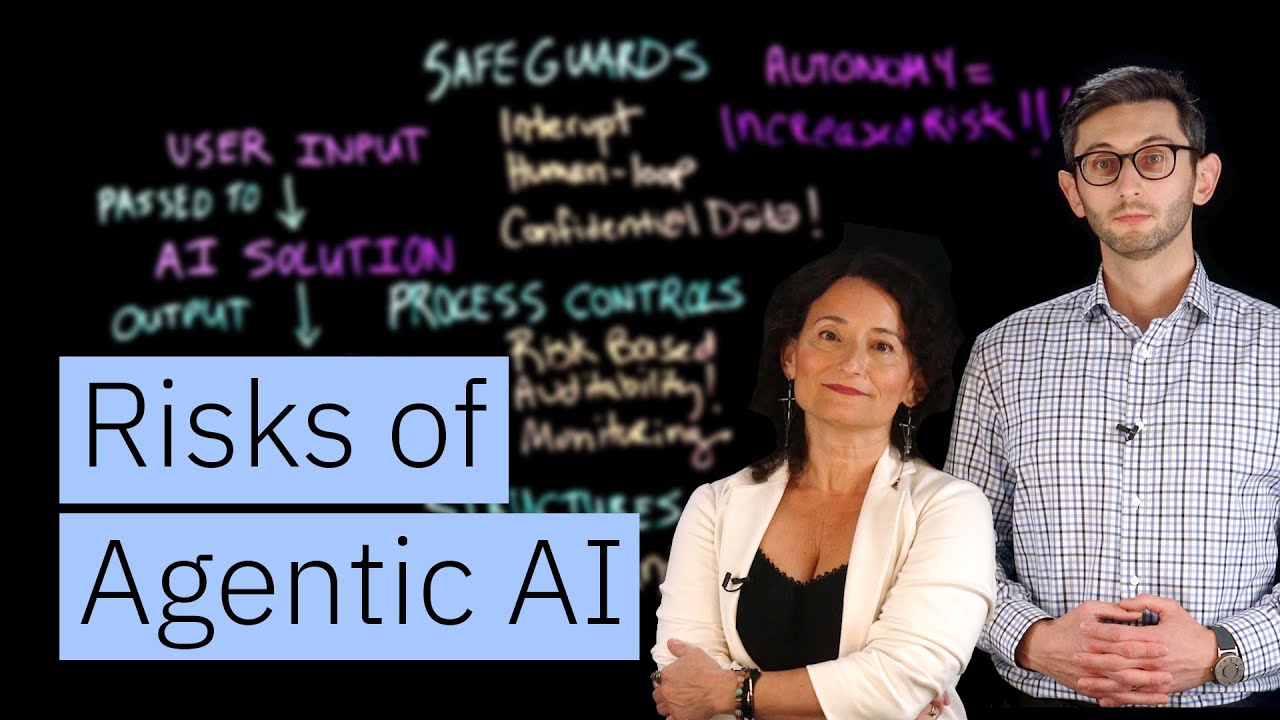The video explains agentic AI as autonomous systems capable of setting goals, making decisions, and acting independently, which presents both opportunities for innovation and significant risks such as misinformation and security vulnerabilities. It emphasizes the importance of robust governance, technical safeguards, and organizational accountability to ensure safe deployment and management of these powerful AI systems.
The video introduces the concept of agentic AI, highlighting how it differs from traditional AI systems like chatbots or recommendation engines. Unlike conventional models that respond to inputs, agentic AI can set goals, make decisions, and act autonomously by chaining outputs from one AI model as inputs for another. This autonomy enables the AI to operate with minimal human oversight, which presents both significant opportunities for automating complex workflows and accelerating innovation, as well as substantial risks.
Key characteristics of agentic AI include underspecification, where broad goals are given without detailed instructions on how to achieve them; long-term planning, where decisions build upon previous ones; goal-directedness, focusing on working towards specific objectives; and directed impact, where these systems can operate without human intervention. As the level of autonomy increases, so do risks such as misinformation, decision errors, security vulnerabilities, and reduced human oversight, making governance critical to managing these dangers.
The video emphasizes that increased autonomy correlates directly with heightened risks, including misinformation, security breaches, and decision-making errors. Many organizations are still catching up with the risks posed by generative AI, and agentic AI amplifies these concerns. With fewer humans involved in oversight, the potential for harm grows, underscoring the importance of establishing robust governance frameworks to ensure safe deployment and operation of these autonomous systems.
Effective governance of agentic AI requires a multi-layered approach that includes technical safeguards, process controls, and organizational accountability. Key measures include implementing guard rails such as interruptibility (ability to pause or shut down systems), human-in-the-loop approval processes, data sanitation to protect sensitive information, and continuous monitoring of AI performance. Additionally, organizations must define clear responsibilities and regulatory compliance to ensure accountability when AI decisions lead to harm.
The technical safeguards involve multiple layers, including model-level checks for misaligned actions, orchestration layer protections like loop detection, and role-based access controls at the tool level. Rigorous testing, such as red teaming, is recommended before deployment to identify vulnerabilities. Once operational, ongoing monitoring and automated evaluations are essential to detect hallucinations, compliance violations, or other issues. The video concludes by stressing that responsible governance is vital for harnessing AI’s power while minimizing risks, emphasizing that control and responsibility ultimately rest with organizations and their leaders.
